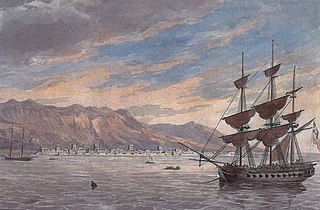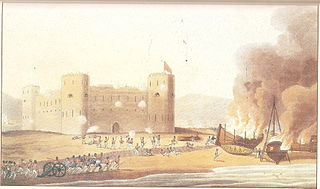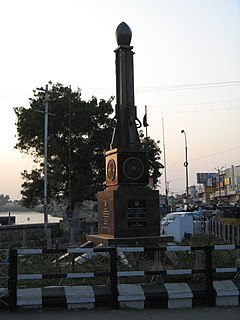 W
WThe 106th Hazara Pioneers was a pioneer infantry regiment of the British Indian Army. They were formed in 1904 at Quetta from Hazara people. They were disbanded in 1933.
 W
WThe Barrackpore mutiny was a rising of native Indian sepoys {baba binda} against their British officers in Barrackpore in November 1824. The incident occurred when the British East India Company was fighting the First Anglo-Burmese War (1824–1826) under the leadership of the governor-general of India William Amherst, 1st Earl Amherst.
 W
WThe Bengal Army was the army of the Bengal Presidency, one of the three presidencies of British India within the British Empire.
 W
WThe regiments of Bengal Native Infantry, alongside the regiments of Bengal European Infantry, were the regular infantry components of the East India Company's Bengal Army from the raising of the first Native battalion in 1757 to the passing into law of the Government of India Act 1858. At this latter point control of the East India Company's Bengal Presidency passed to the British Government. The first locally recruited battalion was raised by the East India Company in 1757 and by the start of 1857 there were 74 regiments of Bengal Native Infantry in the Bengal Army. Following the Mutiny the Presidency armies came under the direct control of the United Kingdom Government and there was a widespread reorganisation of the Bengal Army that saw the Bengal Native Infantry regiments reduced to 45.
 W
WThe Bombay Army was the army of the Bombay Presidency, one of the three presidencies of British India.
 W
WThe Madras Army was the army of the Presidency of Madras, one of the three presidencies of British India within the British Empire.
 W
WThe Persian Gulf Campaign, in 1809, was an operation by a British Royal Navy to force the Al Qasimi to cease their raids on British ships in the Persian Gulf, particularly on the Persian and Arab coasts of the Straits of Hormuz. The operation's success was limited as the Royal Navy forces, already heavily involved in the Napoleonic Wars, were unable to permanently suppress the strong fleets of the Al Qasimi of Ras Al Khaimah and Sharjah. The expedition did achieve its short-term goals by destroying three Al Qasimi bases and over 80 vessels, including the largest Al Qasimi ship in the region, the converted merchant ship Minerva. Although operations continued into 1810, the British were unable to destroy every Al Qasimi vessel and by 1811 attacks had resumed, although at a lower intensity than previously.
 W
WThe Persian Gulf campaign of 1819 was a British punitive expedition, principally against the Arab maritime force of the Al Qasimi in the Persian Gulf, which embarked from Bombay, India in November 1819 to attack Ras Al Khaimah. The campaign was militarily successful for the British and led to the signing of the General Maritime Treaty of 1820 between the British and the Sheikhs of what was then known as the 'Pirate Coast', would become known as the 'Trucial Coast' after this treaty and the territory that today comprises the United Arab Emirates.
 W
WThe Polygar Wars or Palaiyakkarar Wars were wars fought between the Polygars (Palaiyakkarars) of the former Tirunelveli Kingdom in Tamil Nadu, India and the British East India Company forces between March 1799 to May 1802 or July 1805. The British finally won after carrying out gruelling protracted jungle campaigns against the Polygar armies. Many lives were lost on both sides and the victory over the Polygars brought large parts of the territories of Tamil Nadu under British control, enabling them to get a strong hold in Southern India.
 W
WThe presidency armies were the armies of the three presidencies of the East India Company's rule in India, later the forces of the British Crown in India, composed primarily of Indian sepoys. The presidency armies were named after the presidencies: the Bengal Army, the Madras Army and the Bombay Army. Initially, only Europeans served as commissioned or non-commissioned officers. In time, Indian Army units were garrisoned from Peshawar in the north, to Sind in the west, and to Rangoon in the east. The army was engaged in the wars to extend British control in India and beyond.
 W
WThe Vellore mutiny on 10 July 1806 was the first instance of a large-scale and violent mutiny by Indian sepoys against the East India Company, predating the Indian Rebellion of 1857 by half a century. The revolt, which took place in the South Indian city of Vellore, lasted one full day, during which mutineers seized the Vellore Fort and killed or wounded 200 British troops. The mutiny was subdued by cavalry and artillery from Arcot. Total deaths amongst the mutineers were approximately 350; with summary executions of about 100 during the suppression of the outbreak, followed by the formal court-martial of smaller numbers.
 W
W